Abstract
Controlled standardised histamine inhalation tests were carried out in 21 asthmatics to determine the degree of non-specific bronchial hyperreactivity with and without prior treatment with several anti-asthmatic drugs. A significant protective effect was produced by inhaled salbutamol, 200 microgram, ingested salbutamol, 4 mg, inhaled Sch1000, 40 microgram inhaled atropine sulphate, 290 microgram, and ingested choline theophylinate (200 or 400 mg) producing serum theophylline levels over 10 mg/l. Inhaled salbutamol was consistently the most effective and was significantly better than the other drugs. The protective effect between the other four was not significantly different. Drug side-effects occurred only with the ingested drugs. No significant protection was detected after ingested choline theophyllinate producing serum theophylline levels of less than 10 mg/l, inhaled sodium cromoglycate, 20 mg given once or six-hourly for one week, or ingested ascorbic acid, 1 gram.
Full text
PDF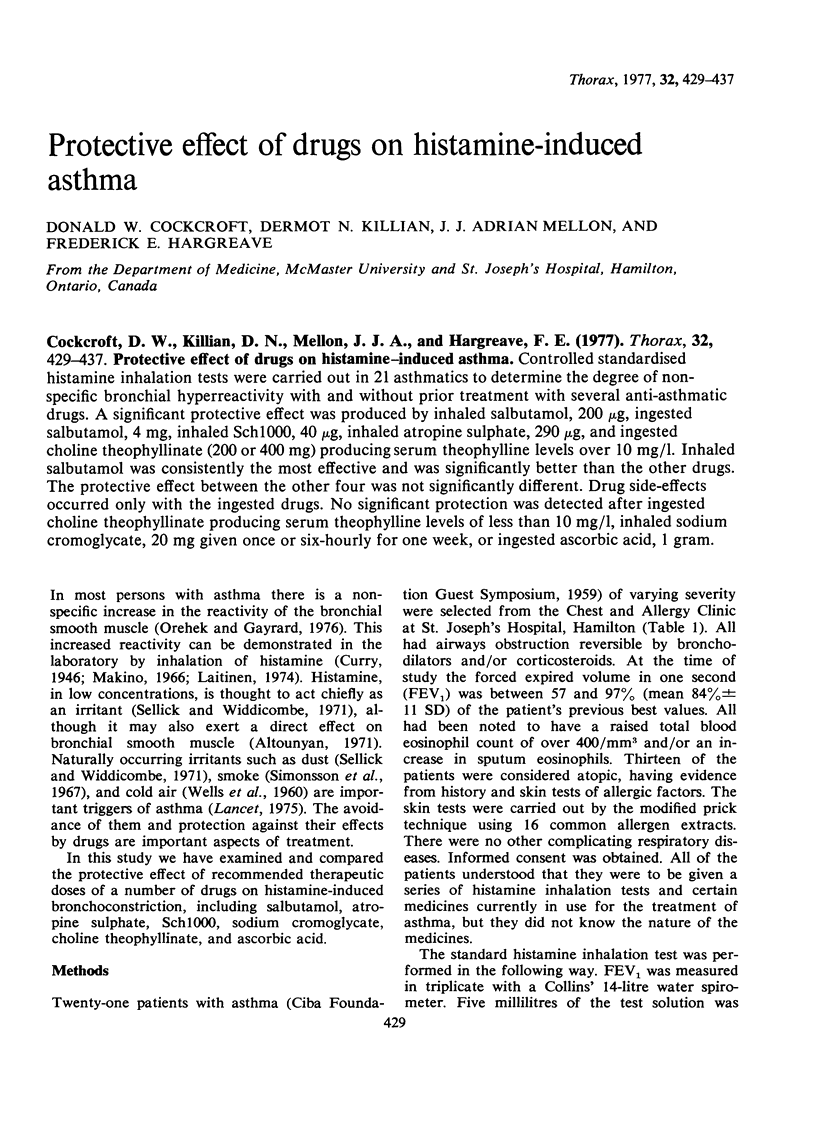
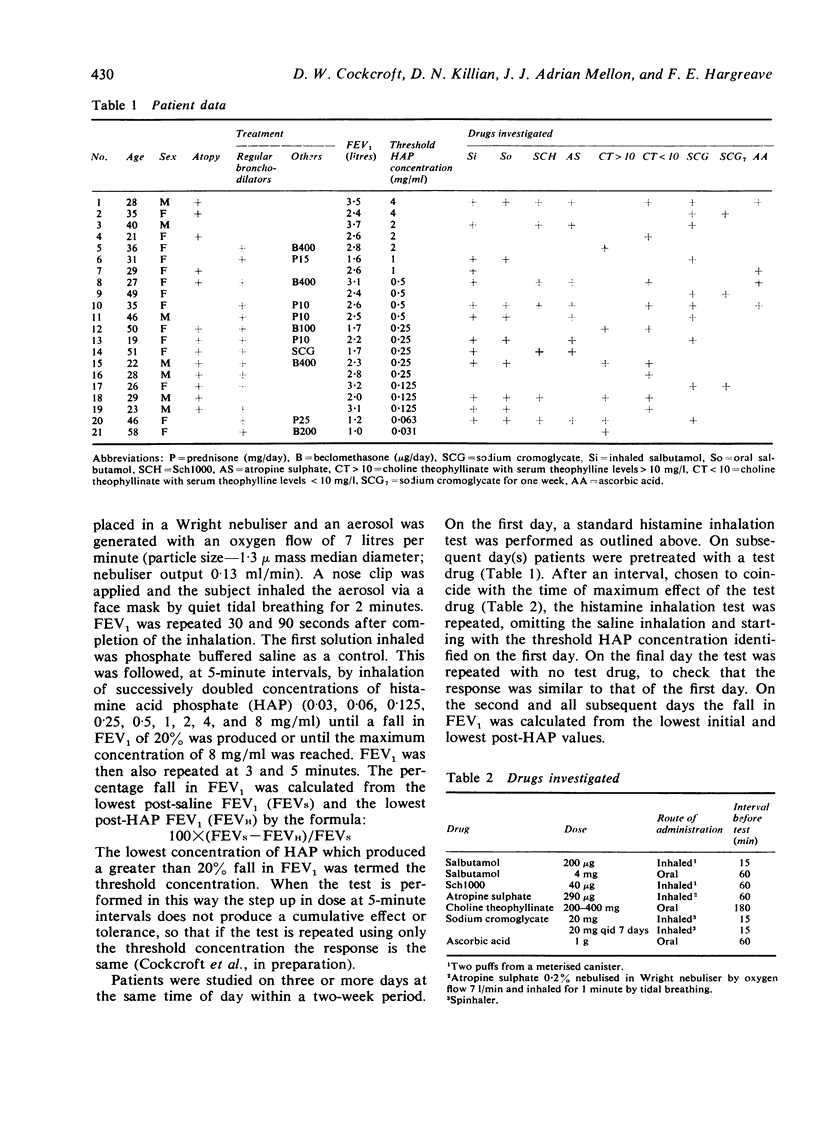
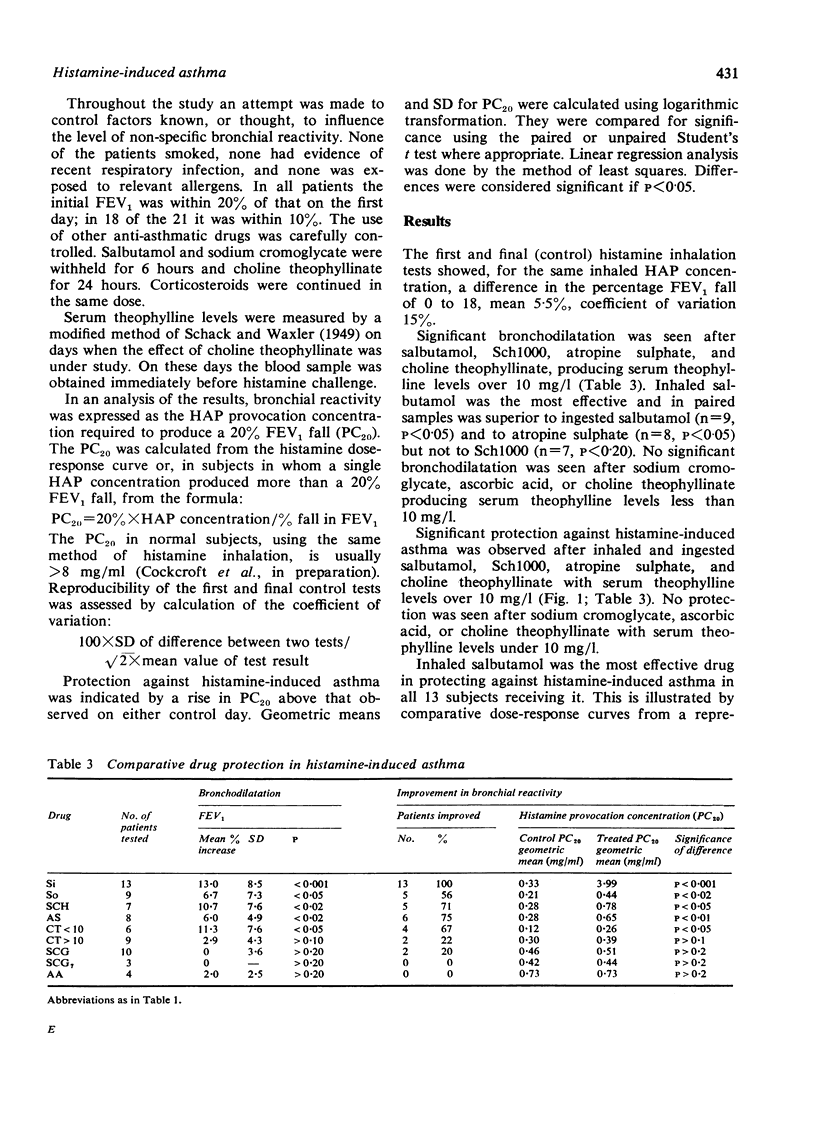
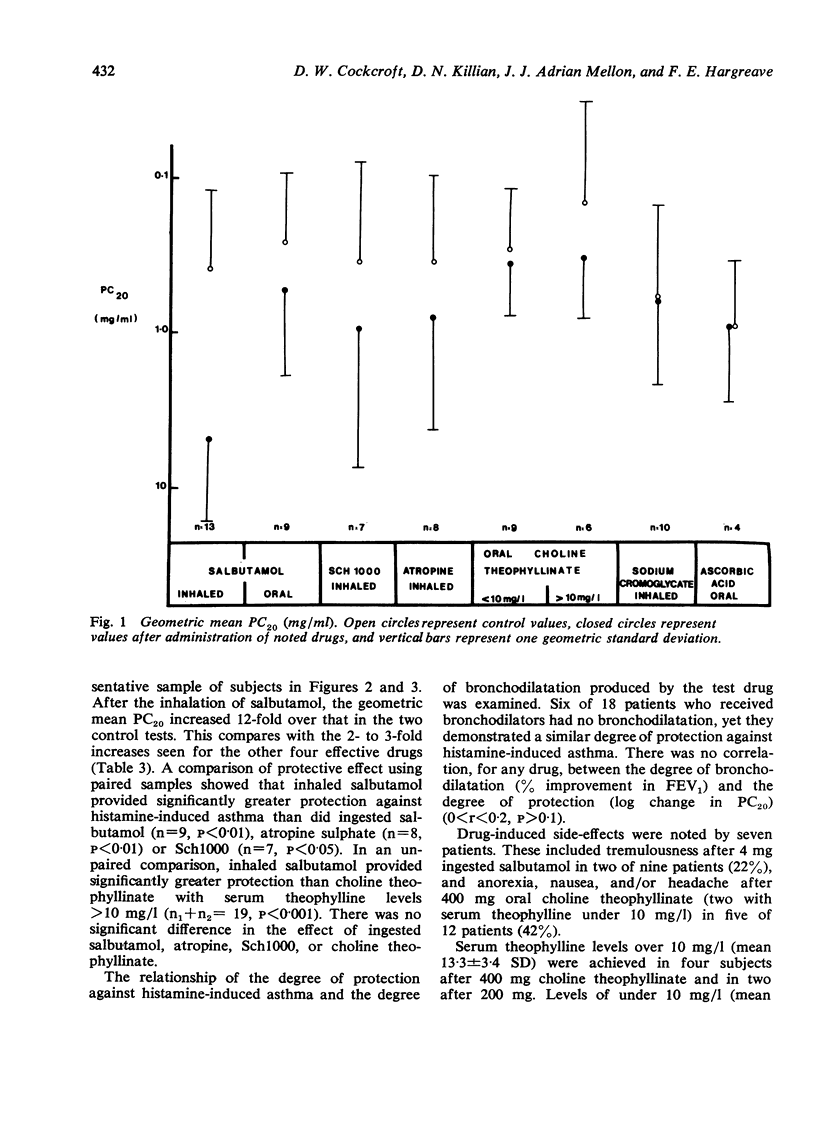
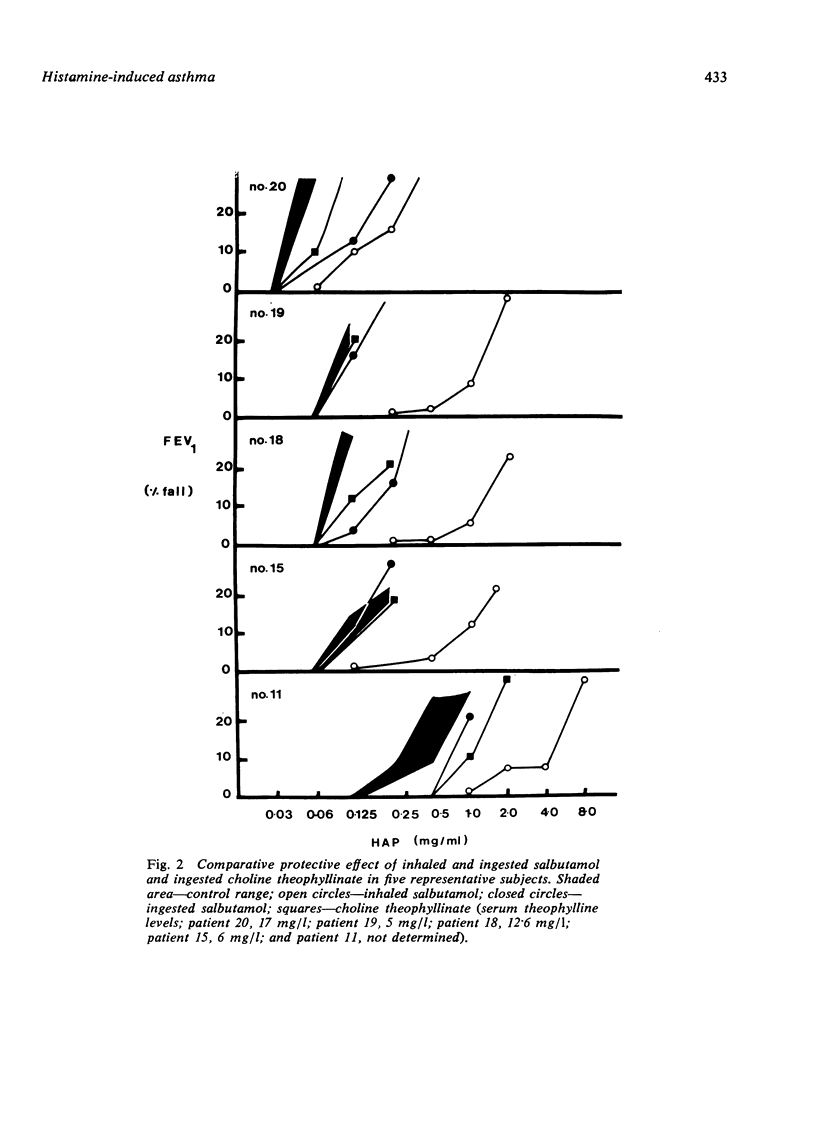
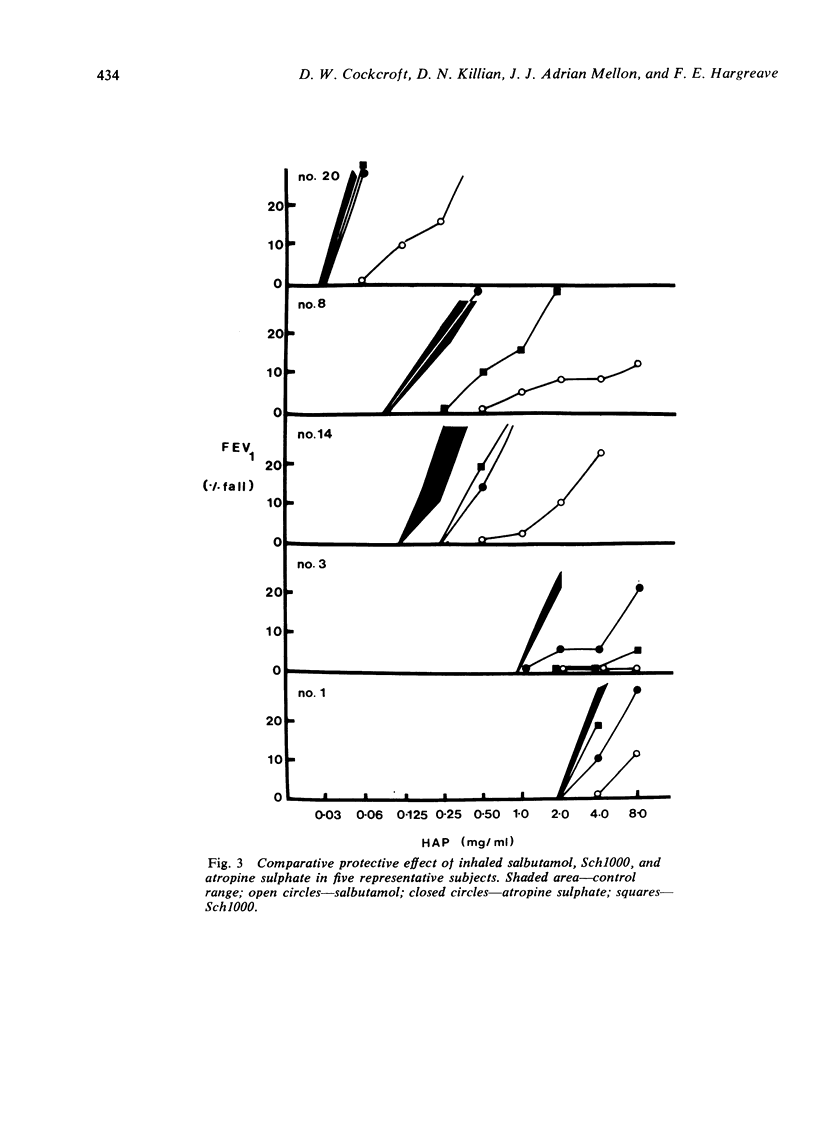
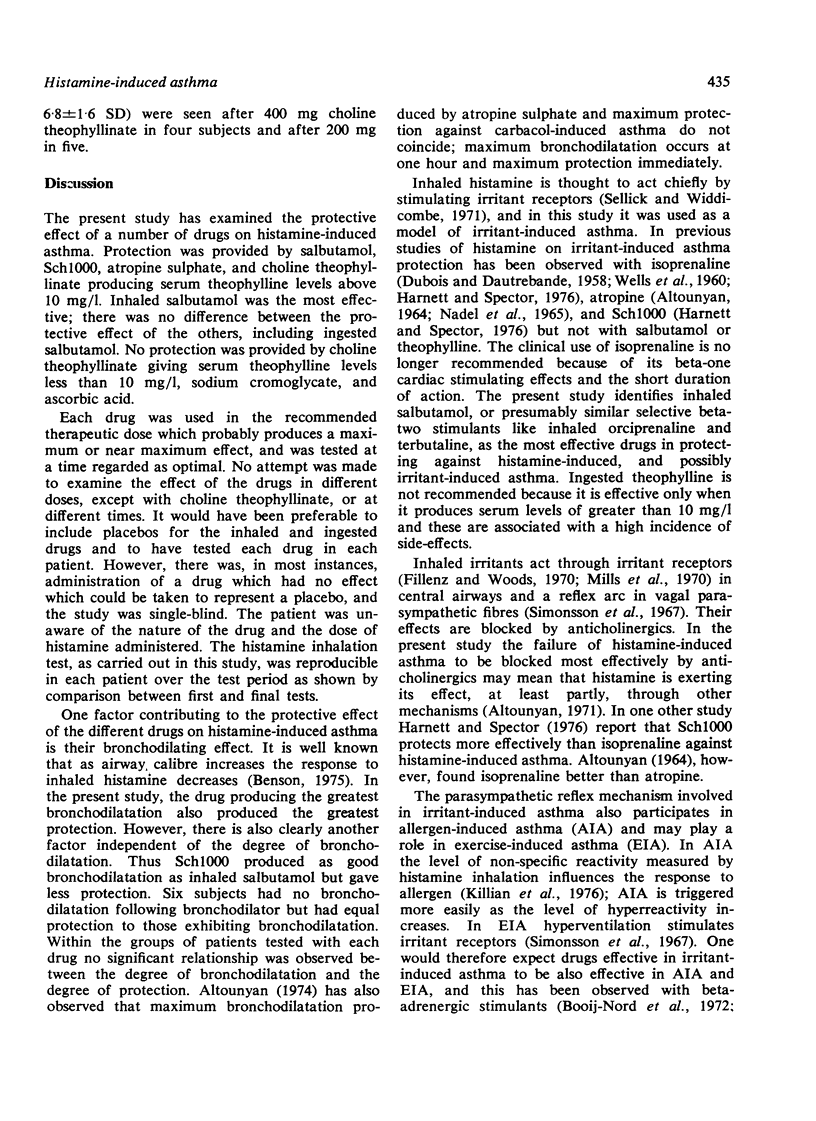
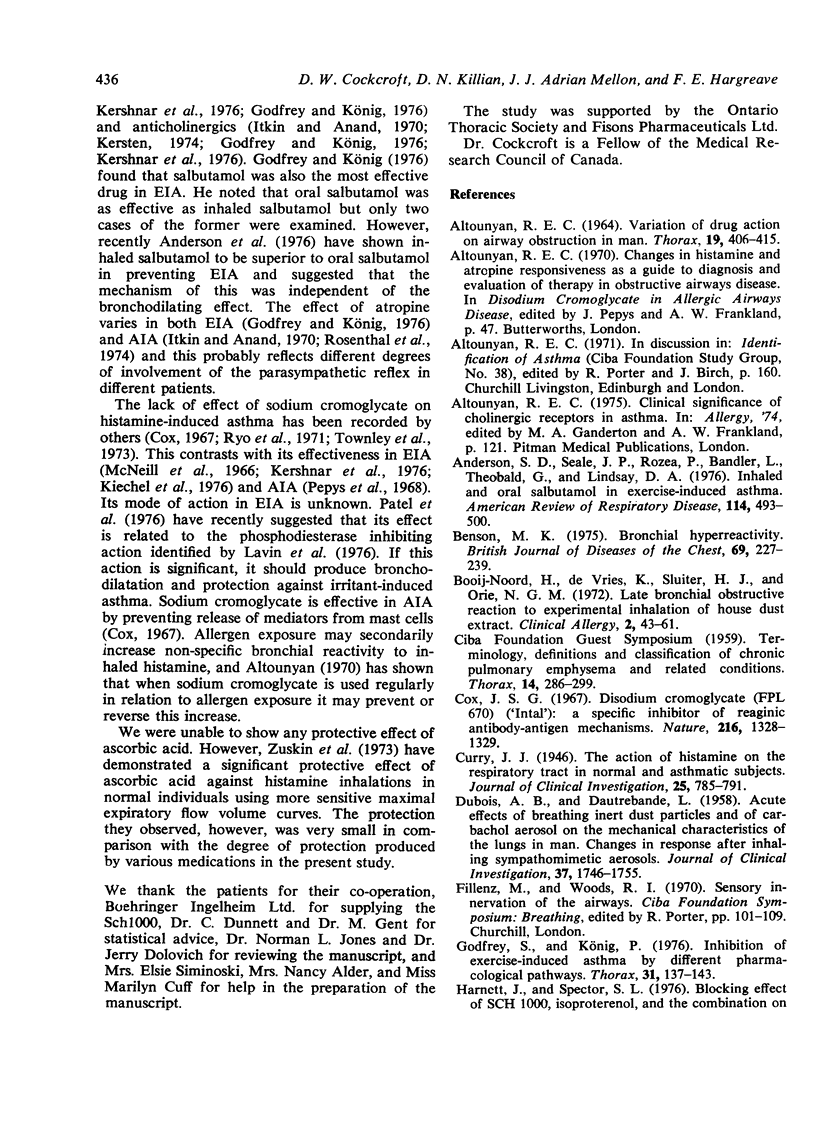
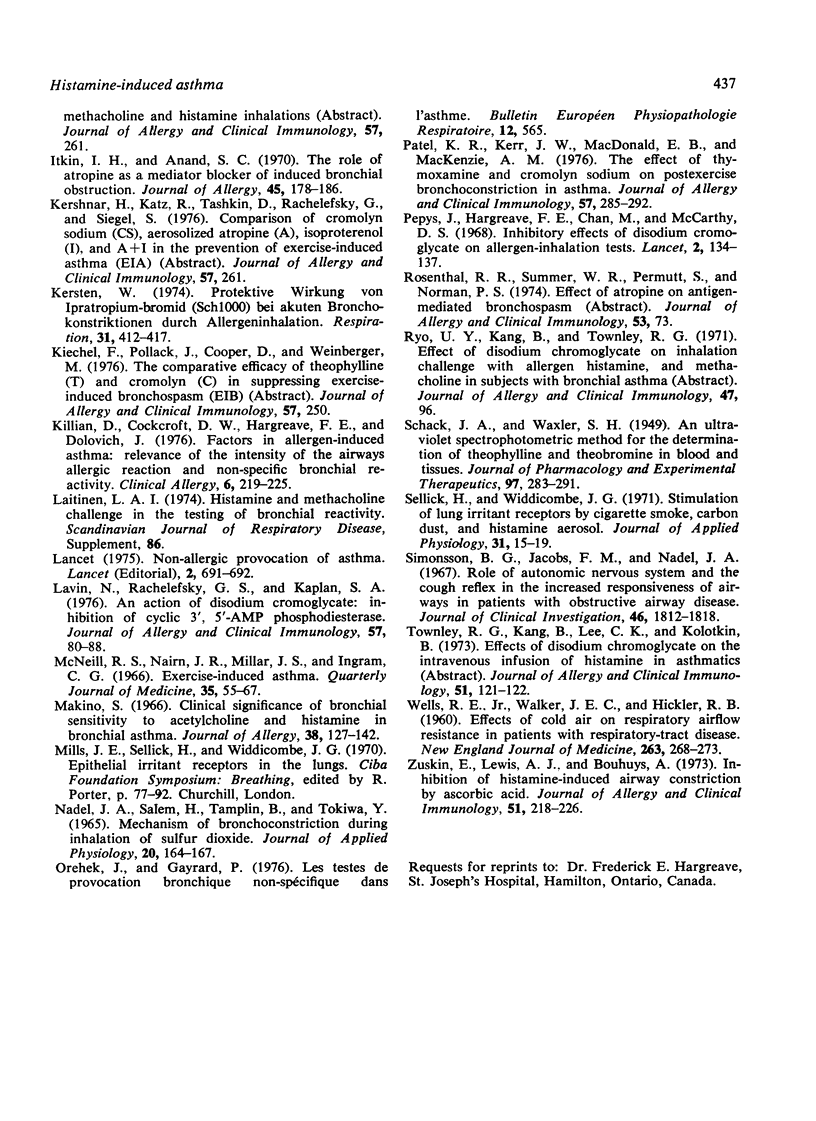
Selected References
These references are in PubMed. This may not be the complete list of references from this article.
- ALTOUNYAN R. E. VARIATION OF DRUG ACTION ON AIRWAY OBSTRUCTION IN MAN. Thorax. 1964 Sep;19:406–415. doi: 10.1136/thx.19.5.406. [DOI] [PMC free article] [PubMed] [Google Scholar]
- Anderson S. D., Seale J. P., Rozea P., Bandler L., Theobald G., Lindsay D. A. Inhaled and oral salbutamol in exercise-induced asthma. Am Rev Respir Dis. 1976 Sep;114(3):493–500. doi: 10.1164/arrd.1976.114.3.493. [DOI] [PubMed] [Google Scholar]
- Benson M. K. Bronchial hyperreactivity. Br J Dis Chest. 1975 Oct;69(0):227–239. doi: 10.1016/0007-0971(75)90090-x. [DOI] [PubMed] [Google Scholar]
- Booij-Noord H., de Vries K., Sluiter H. J., Orie N. G. Late bronchial obstructive reaction to experimental inhalation of house dust extract. Clin Allergy. 1972 Mar;2(1):43–61. doi: 10.1111/j.1365-2222.1972.tb01267.x. [DOI] [PubMed] [Google Scholar]
- Cox J. S. Disodium cromoglycate (FPL 670) ('Intal'): a specific inhibitor of reaginic antibody-antigen mechanisms. Nature. 1967 Dec 30;216(5122):1328–1329. doi: 10.1038/2161328a0. [DOI] [PubMed] [Google Scholar]
- Curry J. J. THE ACTION OF HISTAMINE ON THE RESPIRATORY TRACT IN NORMAL AND ASTHMATIC SUBJECTS. J Clin Invest. 1946 Nov;25(6):785–791. doi: 10.1172/JCI101764. [DOI] [PMC free article] [PubMed] [Google Scholar]
- DUBOIS A. B., DAUTREBANDE L. Acute effects of breathing inert dust particles and of carbachol aerosol on the mechanical characteristics of the lungs in man; changes in response after inhaling sympathomimetic aerosols. J Clin Invest. 1958 Dec;37(12):1746–1755. doi: 10.1172/JCI103767. [DOI] [PMC free article] [PubMed] [Google Scholar]
- Godfrey S., König P. Inhibition of exercise-induced asthma by different pharmacological pathways. Thorax. 1976 Apr;31(2):137–143. doi: 10.1136/thx.31.2.137. [DOI] [PMC free article] [PubMed] [Google Scholar]
- Itkin I. H., Anand S. C. The role of atropine as a mediator blocker of induced bronchial obstruction. J Allergy. 1970 Mar;45(3):178–186. doi: 10.1016/0021-8707(70)90126-7. [DOI] [PubMed] [Google Scholar]
- Kersten W. Protektive Wirkung von Ipratropium-bromid (SCH 1000) bei akuten Bronchokonstriktionen durch Allergeninhalation. Respiration. 1974;31(5):412–417. doi: 10.1159/000193614. [DOI] [PubMed] [Google Scholar]
- Killian D., Cockcroft D. W., Hargreave F. E., Dolovich J. Factors in allergen-induced asthma: relevance of the intensity of the airways allergic reaction and non-specific bronchial reactivity. Clin Allergy. 1976 May;6(3):219–225. doi: 10.1111/j.1365-2222.1976.tb01900.x. [DOI] [PubMed] [Google Scholar]
- Lavin N., Rachelefsky G. S., Kaplan S. A. An action of disodium cromoglycate: inhibition of cyclic 3',5'-AMP phosphodiesterase. J Allergy Clin Immunol. 1976 Jan;57(1):80–88. doi: 10.1016/0091-6749(76)90081-6. [DOI] [PubMed] [Google Scholar]
- Makino S. Clinical significance of bronchial sensitivity to acetylcholine and histamine in bronchial asthma. J Allergy. 1966 Sep;38(3):127–142. doi: 10.1016/0021-8707(66)90036-0. [DOI] [PubMed] [Google Scholar]
- McNeill R. S., Nairn J. R., Millar J. S., Ingram C. G. Exercise-induced asthma. Q J Med. 1966 Jan;35(137):55–67. [PubMed] [Google Scholar]
- NADEL J. A., SALEM H., TAMPLIN B., TOKIWA Y. MECHANISM OF BRONCHOCONSTRICTION DURING INHALATION OF SULFUR DIOXIDE. J Appl Physiol. 1965 Jan;20:164–167. doi: 10.1152/jappl.1965.20.1.164. [DOI] [PubMed] [Google Scholar]
- Orehek J., Gayrard P. Les tests de provocation bronchique non-spécifiques dans l'asthme. Bull Eur Physiopathol Respir. 1976 Jul-Aug;12(4):565–598. [PubMed] [Google Scholar]
- Patel K. R., Kerr J. W., MacDonald E. B., MacKenzie A. M. The effect of thymoxamine and cromolyn sodium on postexercise bronchoconstriction in asthma. J Allergy Clin Immunol. 1976 Apr;57(4):285–292. doi: 10.1016/0091-6749(76)90084-1. [DOI] [PubMed] [Google Scholar]
- Pepys J., Hargreave F. E., Chan M., McCarthy D. S. Inhibitory effects of disodium cromoglycate on allergen-inhalation tests. Lancet. 1968 Jul 20;2(7560):134–137. doi: 10.1016/s0140-6736(68)90419-4. [DOI] [PubMed] [Google Scholar]
- SCHACK J. A., WAXLER S. H. An ultraviolet spectrophotometric method for the determination of theophylline and theobromine in blood and tissues. J Pharmacol Exp Ther. 1949 Nov;97(3):283–291. [PubMed] [Google Scholar]
- Sellick H., Widdicombe J. G. Stimulation of lung irritant receptors by cigarette smoke, carbon dust, and histamine aerosol. J Appl Physiol. 1971 Jul;31(1):15–19. doi: 10.1152/jappl.1971.31.1.15. [DOI] [PubMed] [Google Scholar]
- Simonsson B. G., Jacobs F. M., Nadel J. A. Role of autonomic nervous system and the cough reflex in the increased responsiveness of airways in patients with obstructive airway disease. J Clin Invest. 1967 Nov;46(11):1812–1818. doi: 10.1172/JCI105671. [DOI] [PMC free article] [PubMed] [Google Scholar]
- WELLS R. E., Jr, WALKER J. E., HICKLER R. B. Effects of cold air on respiratory airflow resistance in patients with respiratory-tract disease. N Engl J Med. 1960 Aug 11;263:268–273. doi: 10.1056/NEJM196008112630602. [DOI] [PubMed] [Google Scholar]
- Zuskin E., Lewis A. J., Bouhuys A. Inhibition of histamine-induced airway constriction by ascorbic acid. J Allergy Clin Immunol. 1973 Apr;51(4):218–226. doi: 10.1016/0091-6749(73)90141-3. [DOI] [PubMed] [Google Scholar]


